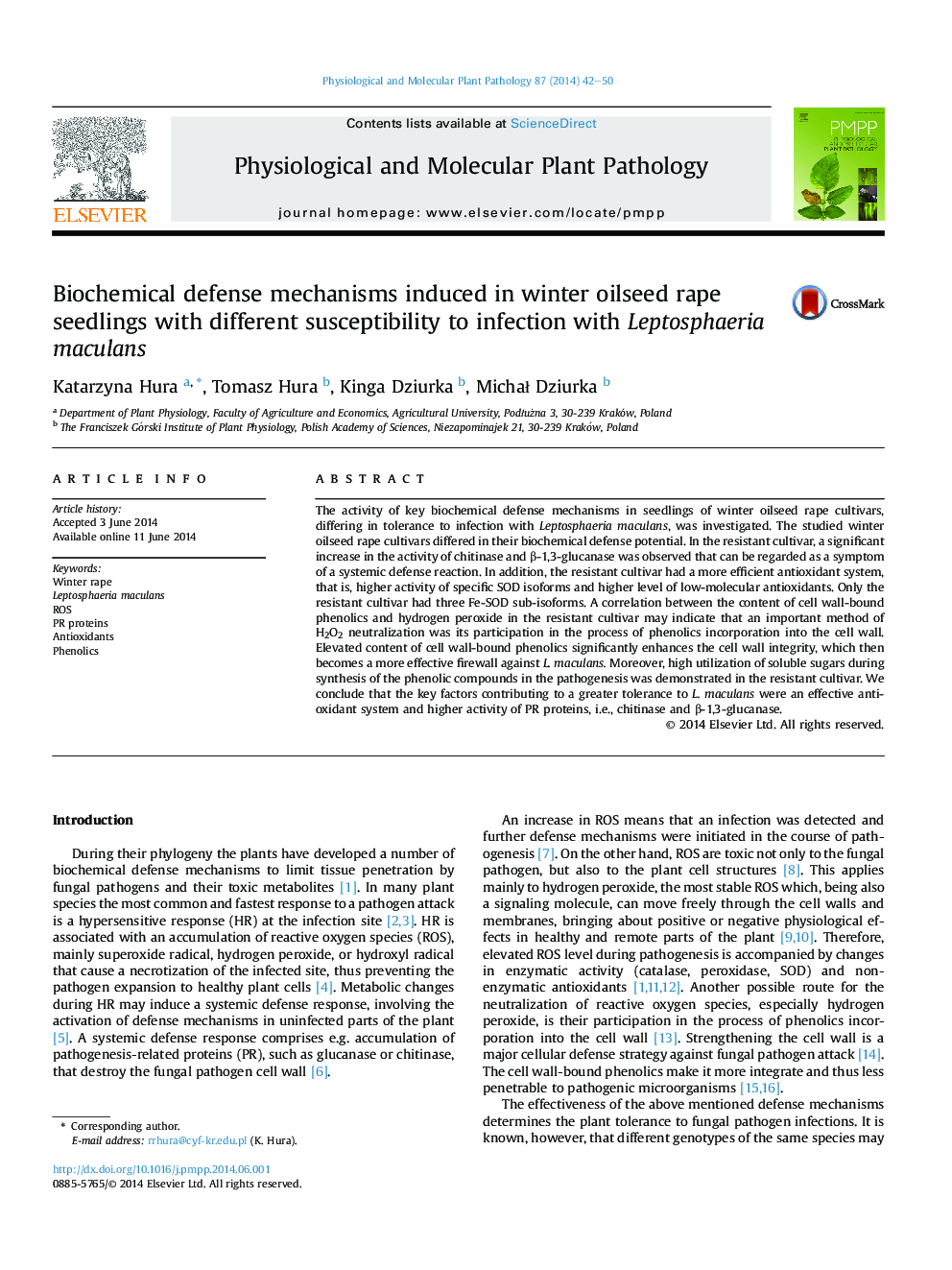| کد مقاله | کد نشریه | سال انتشار | مقاله انگلیسی | نسخه تمام متن |
|---|---|---|---|---|
| 2836342 | 1570852 | 2014 | 9 صفحه PDF | دانلود رایگان |

• Higher level of O2·− in the leaves of sensitive cultivar was demonstrated.
• Systemic response was indicated by high activity of chitinase and β-1,3-glucanase.
• Carbohydrates content was correlated with heightened level of phenolics.
• The resistant cultivar displayed higher activity of SOD.
• Three Fe-SOD sub-isoforms were found in the resistant winter oilseed rape cultivar.
The activity of key biochemical defense mechanisms in seedlings of winter oilseed rape cultivars, differing in tolerance to infection with Leptosphaeria maculans, was investigated. The studied winter oilseed rape cultivars differed in their biochemical defense potential. In the resistant cultivar, a significant increase in the activity of chitinase and β-1,3-glucanase was observed that can be regarded as a symptom of a systemic defense reaction. In addition, the resistant cultivar had a more efficient antioxidant system, that is, higher activity of specific SOD isoforms and higher level of low-molecular antioxidants. Only the resistant cultivar had three Fe-SOD sub-isoforms. A correlation between the content of cell wall-bound phenolics and hydrogen peroxide in the resistant cultivar may indicate that an important method of H2O2 neutralization was its participation in the process of phenolics incorporation into the cell wall. Elevated content of cell wall-bound phenolics significantly enhances the cell wall integrity, which then becomes a more effective firewall against L. maculans. Moreover, high utilization of soluble sugars during synthesis of the phenolic compounds in the pathogenesis was demonstrated in the resistant cultivar. We conclude that the key factors contributing to a greater tolerance to L. maculans were an effective antioxidant system and higher activity of PR proteins, i.e., chitinase and β-1,3-glucanase.
Journal: Physiological and Molecular Plant Pathology - Volume 87, July 2014, Pages 42–50